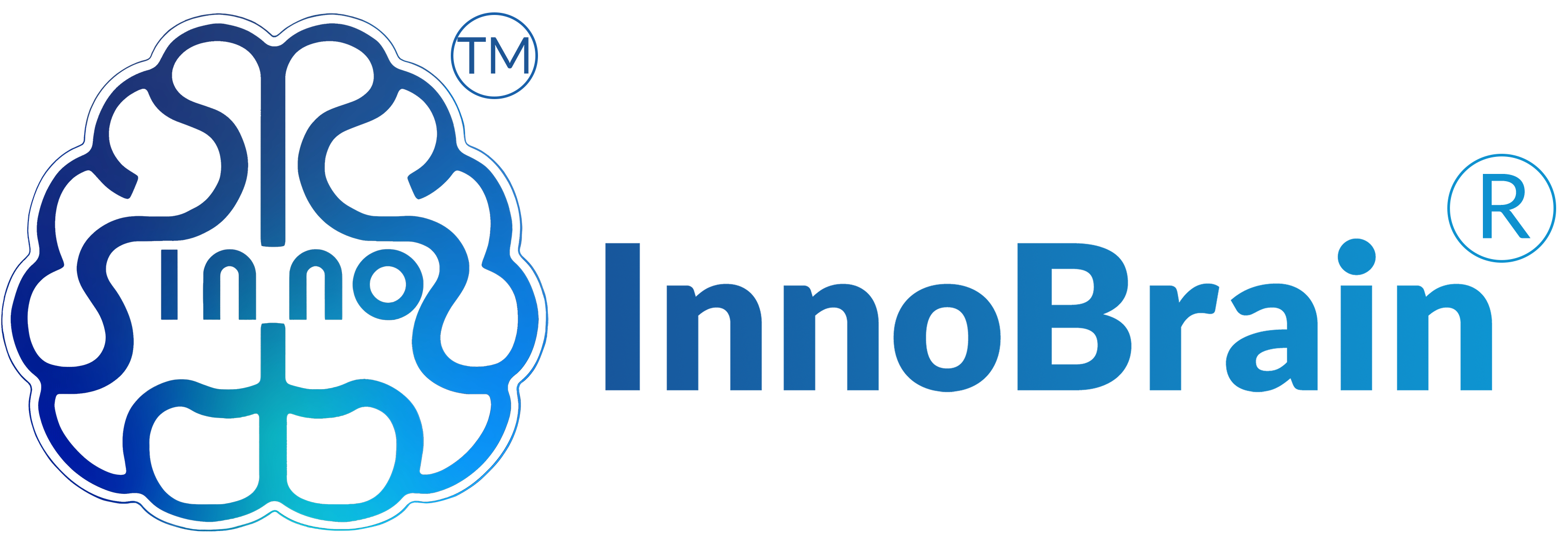Fatigue is silent – but it leaves a trace in the brain.
Whether you’re driving, performing safety-critical tasks, or working long hours, fatigue can creep in and impair performance, often before you even realize it. Traditional detection methods, such as behavioral observation or self-reporting, are subjective, delayed, and unsuitable for real-time applications. People tend to underestimate how drowsy they are and overestimate how capable they feel, which can lead to risky behavior and poor decision-making. InnoBrain’s algorithms, combined with portable, plug-and-play EEG-based wearables, offer something more direct: a continuous, objective window into the brain’s cognitive state.
Grounded in neuroscience and backed by a proprietary dataset of over 40,000 hours of real-world EEG recordings, our method combines medical-grade equivalent dry-electrode systems with advanced AI analytics, with findings that align with and expand upon established neuroscience research.
A growing body of research supports the use of EEG spectral features – particularly alpha band activity – as reliable markers of fatigue. In individuals experiencing fatigue, slow-wave activity tends to increase in both the theta and alpha bands, reflecting changes in cortical arousal and cognitive engagement. Craig et al. (2012) surveyed multiple studies and found consistent evidence that alpha power increases, especially in parietal and occipital regions, during the tasks. Wascher et al. (2014) similarly reported that total alpha power was significantly higher at the end of their experiment compared to the beginning. Interestingly, alpha power reached its peak after just one hour on task, while frontal theta activity continued to rise, potentially indicating increased mental effort to maintain performance. Taken together, these studies establish alpha power as a robust and widely observed neural marker of fatigue.
Unlike traditional EEG-based fatigue detection methods that primarily rely on late-stage alpha power increases, InnoBrain’s proprietary algorithm detects fatigue in its earliest stages – before performance drops – enabling proactive interventions.
This white paper provides a brief introduction to our latest findings and includes selected samples from our dataset. Additional details on the model, dataset, and expanded results will be presented in our forthcoming scientific publication.
Real-World Observations
We collected EEG data from participants performing a range of mentally demanding tasks using a portable dry-electrode system. During these sessions, trained technicians monitored participants and manually flagged periods of drowsiness or visible fatigue, such as prolonged eye closure, head nodding, and slowed reactions. Additionally, we provided participants with different questionnaires and cross-checked the self-reporting data. We then ran our algorithm on the EEG data to examine how the fatigue index evolved over time in each session.
Figure 1 shows data from a participant who became significantly fatigued and was on the verge of falling asleep. The left plot shows alpha power, and the right plot shows the fatigue index. Both metrics show a clear upward trend, reflecting increasing fatigue.
 Figure 1. Relative alpha power and InnoBrain fatigue index through time for a drowsy subject who was nearly falling asleep. An upward trend is obvious for both metrics.
Figure 1. Relative alpha power and InnoBrain fatigue index through time for a drowsy subject who was nearly falling asleep. An upward trend is obvious for both metrics.
Next, we examine participants who were clearly fatigued, though not to the same extent as the previous batch of participants. Figures 2 and 3 show alpha power and the fatigue index for these individuals. As shown, the fatigue index consistently increases, accurately capturing the growing fatigue in both cases. However, alpha power remains relatively stable, without any significant increase.
 Figure 2. Relative alpha power and InnoBrain fatigue index through time for a fatigued subject. The fatigue index increases steadily, while alpha power remains flat.
Figure 2. Relative alpha power and InnoBrain fatigue index through time for a fatigued subject. The fatigue index increases steadily, while alpha power remains flat.
 Figure 3. Relative alpha power and InnoBrain fatigue index through time for a fatigued subject. A clear upward trend is shown for the InnoBrain fatigue index.
Figure 3. Relative alpha power and InnoBrain fatigue index through time for a fatigued subject. A clear upward trend is shown for the InnoBrain fatigue index.
Finally, in the last batch of participants (Figures 4 to 6), self-reported questionnaires indicated that they did not feel particularly fatigued during the task, and their perceived fatigue remained mostly stable. As expected, their fatigue index values remained low (below 14) and showed no notable changes over time, whereas alpha power levels varied and could even appear elevated, despite no actual fatigue being present.
 Figure 4. Relative alpha power and InnoBrain fatigue index through time for an alert subject. A decreasing trend is shown for the InnoBrain fatigue index.
Figure 4. Relative alpha power and InnoBrain fatigue index through time for an alert subject. A decreasing trend is shown for the InnoBrain fatigue index.
 Figure 5. Relative alpha power and InnoBrain fatigue index through time for an alert subject. A slight increasing trend is shown for the InnoBrain fatigue index, while the index is less than 14 throughout the whole time.
Figure 5. Relative alpha power and InnoBrain fatigue index through time for an alert subject. A slight increasing trend is shown for the InnoBrain fatigue index, while the index is less than 14 throughout the whole time.
 Figure 6. Relative alpha power and InnoBrain fatigue index through time for an alert subject. A steady trend is shown for the InnoBrain fatigue index.
Figure 6. Relative alpha power and InnoBrain fatigue index through time for an alert subject. A steady trend is shown for the InnoBrain fatigue index.
In sessions where participants were visibly fatigued – particularly those nearing drowsiness – the fatigue index showed a clear upward trend, and alpha power also increased, consistent with existing literature. However, among participants who were moderately fatigued but not yet drowsy, a different pattern emerged: the fatigue index still rose steadily, while alpha power remained largely unchanged. This suggests that alpha power alone may not reliably capture early or moderate levels of fatigue.
In participants who reported little to no fatigue, the fatigue index remained consistently low (below 15) and stable. Notably, the fatigue index offered a directly interpretable numerical value, clearly distinguishing between fatigued (above 15) and alert (below 15) cases across all participants. In contrast, alpha power lacks this clarity; its absolute value varies significantly across sessions, even when fatigue levels were low, making it difficult to use on its own as a reliable indicator. Even when changes in alpha occurred, they were not always aligned with the participant’s fatigue state.
These observations point to a key strength of InnoBrain’s algorithm: it detects fatigue even when alpha power remains flat, well before the brain reaches a fully disengaged state. Alpha increases likely reflect late-stage fatigue, while our model captures earlier cognitive decline. This early detection capability opens up opportunities for intervention and prevention, before performance is compromised.
The algorithm is being validated across diverse use cases, including industrial and high-fidelity operational scenarios. The platform integrates with a lightweight, plug-and-play, wearable dry EEG headset and real-time dashboards, enabling practical, portable, and scalable cognitive state monitoring.
Why InnoBrain’s Fatigue Detection Stands Out
Early Detection, Proactive Action
Most EEG-based fatigue detection methods focus on alpha power changes – a reliable but late-stage signal. By the time alpha rises significantly, cognitive performance is often already impaired. InnoBrain’s proprietary algorithm detects subtle neural changes that precede these late-stage markers, identifying fatigue in its earliest phases and enabling timely intervention before safety or productivity is compromised.
Proven on Real-World Data
Our approach is validated on over 40,000 hours of proprietary EEG recordings collected in operational environments, from simulator training to industrial work settings. This unmatched dataset ensures our system is robust across individuals, tasks, and conditions – not just in controlled lab experiments.
Portable, Scalable, Ready to Deploy
The solution integrates seamlessly with lightweight, medical-grade equivalent dry-electrode EEG headsets. Setup takes minutes, and data is processed in real time via our cloud platform, making it practical for large-scale deployments in industries such as:
- Aviation: Preventing pilot fatigue during training and long-haul operations.
- Transportation & Logistics: Reducing accidents caused by driver drowsiness.
- Industrial Operations: Protecting workers in safety-critical roles.
Objective and Interpretable
The InnoBrain Fatigue Index provides a clear, numerical indicator of fatigue – easy to track, easy to act upon. Unlike raw alpha power, which varies widely between individuals, our index is consistent, interpretable, and directly tied to performance states.
Measurable ROI
By detecting fatigue earlier, organizations can reduce safety incidents, improve decision-making under pressure, and optimize workforce efficiency. This translates into tangible cost savings and improved operational reliability.
References
- Craig, Ashley, Yvonne Tran, Nirupama Wijesuriya, and Hung Nguyen. “Regional brain wave activity changes associated with fatigue.” Psychophysiology 49, no. 4 (2012): 574-582.
- Wascher, Edmund, Björn Rasch, Jessica Sänger, Sven Hoffmann, Daniel Schneider, Gerhard Rinkenauer, Herbert Heuer, and Ingmar Gutberlet. “Frontal theta activity reflects distinct aspects of mental fatigue.” Biological psychology 96 (2014): 57-65.


